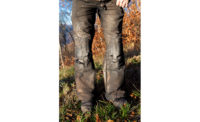When it comes to fire hazards, it’s best to be as safe as possible. Many businesses and industries do work that poses a risk of minor to severe burns, blindness, or other fire safety hazards. Some fire hazard risks can be minimized with training such as fire safety and injury prevention, keeping fire extinguishers handy, and making sure your workplace is OSHA compliant and up to date with general safety guidelines. For environments that put workers in contact with explosive gases or particles, electrical hazards, and sparks or flames, fire-resistant or arc flash rated clothing is another essential part of fire safety.
Industry safety regulations and the evolution of voluntary performance standards have ensured that fire-resistant (FR) clothing is more readily available. For many industries, FR gear is a requirement to ensure worker safety, and keeping FR clothing in good repair is crucial for reducing on-site injuries and extending the life of the garments.
FR clothing basics
FR clothing protects its wearer by reacting to heat and fire differently than ordinary clothing. FR materials resist ignition (if they do ignite, they self-extinguish quickly) and don’t melt onto skin and cause further injuries. FR gear is also designed to be tear and break resistant as well as thermally insulated. There are different standards to guide employers toward the kind of FR clothing suited for their industry’s fire hazard risks, so make sure that you’re familiar with the applicable standards and provide compliant garments.
The weight, texture, weave, and color matters when it comes to the amount of heat an FR garment can resist, but flame-resistant fibers are really what makes clothing FR. Whether the fibers are inherent, treated, or a combination of the two, what matters is that the clothing is properly engineered for your industry and that the FR properties last through laundering and stress.
How to wash FR clothing
FR garments aren’t the same as regular clothing and require specific washing instructions to maintain their effectiveness. Proper care of your garments will protect your employees and save you money by keeping your garments in good condition. The care recommendations from the product manufacturer should always be the first place you look before you wash your FR garments, and you should always follow those instructions.
Some washing rules apply to most FR clothing, though. Home laundry machines can be used to remove everyday dust and dirt from FR clothing, and industrial machines are better suited for heavy grime or tough buildup, so choose your washing machine based on your work environment (and don’t wash everyday clothing in a load with FR clothing, no matter how convenient it might be).
While FR properties can’t be washed out of clothing, as long as you’re following the manufacturer’s guidelines, some chemicals used at work and in the laundry can compromise those properties. Avoid using insect repellant — especially any containing DEET — on FR clothing, and avoid anti-static or wrinkle-free dryer sheets, fabric softeners, starch, or chlorine bleach when laundering FR clothing.
Repairing FR Clothing
Inspect your FR clothing before every shift like you would any other piece of equipment: any garment that has any of these signs of damage should be reported to a manager and removed from service at least temporarily:
- Thinning or torn fabric, including holes, tears, cuts, burn marks, and everyday wear and abrasion (especially in joints like the knees, elbows, and shoulders)
- Nonfunctioning zippers, pockets, buttons, seams, or other elements
- Significant alterations, including patches, stretching, or additional fabric not in the original design
- Garments that are too large, too small, or otherwise uncomfortable
- Any spots or stains that are permanent and can’t be removed with cleaning, such as those from various industrial chemicals
Some damage can be repaired, and in many situations, it might be the better choice because of how expensive new FR garments are. When deciding whether your garment can be repaired, it’s best to talk to the clothing manufacturer directly for more information. As long as you have a detailed description of the problem or a photo to send to them, they can give you advice on the best course of action.
Sometimes you can send FR clothing in for repairs. Other times, repairs can be as simple as sewing on a flame-resistant patch or replacing elements like seams or zippers. If you’re doing your own repairs, make sure to use FR fabric, thread, and other elements consistent with that of the original garment.
When to replace FR clothing
Like any other garment or piece of equipment, FR clothing won’t last forever. It will eventually need to be replaced, and if the garment is beyond repair, this is your only choice to ensure worker safety. To avoid wearing out your garments too soon, take proper care of them. Store clean garments in a secure, dry, room-temperature location where they’ll be protected from pests and moisture. Encourage vigilance when team members are wearing FR clothing, especially if they’re handling sharp objects or other equipment. Consider using disposable FR clothing for additional protection in certain environments.
If an FR garment was involved in a flash fire or other short-duration thermal exposure, it should be removed from service and replaced. An FR garment that’s been exposed to a fire hazard has already done its job of protecting a worker, but future protection can only be done with a new garment. When investing in new FR clothing, choose high quality, well-made clothing that will last longer than cheaper items.
You want your equipment to be working when it counts, and FR clothing is no exception. Fire-related worksite injuries are extremely dangerous, and protecting workers should always be your top concern. With these tips, you can extend the life of your FR gear and stay true to your commitment to keep your employees safe from fire and heat hazards on the job.



